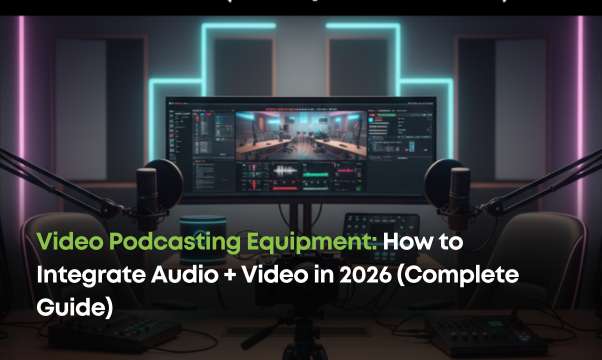10 Essential Medical Legal Transcription Tips Every Practice Must Know
Nov 21, 2025, Nishi SinghKey Takeaways
Medical legal transcription requires deep expertise in both medical and legal terminology.
Accuracy is more important than speed due to high legal risk.
HIPAA compliance and data security are mandatory.
Most medico-legal work requires strict verbatim transcription.
Multi-layered quality checks dramatically reduce transcription errors.
Technology can improve efficiency but must never replace human oversight.
What Is Medical Legal Transcription?
Medical legal transcription is the process of converting audio or video recordings - such as IMEs, expert depositions, patient consultations, and insurance interviews - into accurate, verbatim written documents used as evidence in legal cases.
These transcripts influence court outcomes, insurance claim decisions, and worker’s compensation evaluations, making precision non-negotiable.
Why Medical Legal Transcription Matters
Medical and legal domains both demand zero-tolerance for errors. A single misheard term can change the meaning of a diagnosis, misrepresent testimony, or jeopardize a legal case. Whether you're a practice manager, transcription service provider, or language solutions company, understanding the fine details of medico-legal transcription is essential.
How Medical Legal Transcription Works (Step-by-Step Workflow)
Action-based steps.
Receive & log the audio file with metadata like case ID, length, and deadline.
Review client instructions, formatting expectations, and terminology.
Set up a secure HIPAA-compliant environment for transcription.
Prepare tools such as Express Scribe, foot pedals, and noise-canceling headphones.
Transcribe using strict verbatim unless the client specifies clean verbatim.
Insert timestamps, labels, and structured formatting as per legal standards.
Conduct first-level QA by cross-checking the transcript with the audio.
Editor performs a second pass for accuracy, grammar, and consistency.
Deliver the file securely via encrypted channels.
Archive the transcript following HIPAA and legal retention policies.
Top 10 Medical Legal Transcription Tips
1. Master Both Medical and Legal Terminology
Direct Answer: Skilled transcriptionists must understand clinical jargon and legal terms to avoid misinterpretation.
This includes knowledge of:
Anatomy (e.g., ileum vs. ilium)
Diagnostic procedures
Pharmaceutical names
Legal terminology like deposition, subpoena, affidavit, litigation, tort
Create curated glossaries for each specialty and update them regularly.
2. Prioritize Accuracy Over Speed
In medico-legal transcription, accuracy is more important than turnaround time. One misheard statement can invalidate evidence or distort a medical opinion.
Adopt workflows that include:
Multi-level proofreading
Audio-text alignment checks
Mandatory second reviews for all documents
3. Maintain Strict Confidentiality & HIPAA Compliance
Medical legal files often contain Protected Health Information (PHI).
Your workflow should include:
Encrypted file transfers
HIPAA-compliant storage solutions
Non-Disclosure Agreements (NDAs)
Zero tolerance for unauthorized access
Security breaches lead to legal penalties and loss of client trust.
4. Format Documents with Legal Precision
Legal transcripts must follow standardized formatting that includes:
Correct speaker labels
Paragraph structuring
Accurate timestamps
Consistent margins and spacing
If clients provide a template, follow it. If not, apply standard legal formatting practices.
5. Use High-Quality Audio Equipment
Better audio = better transcription accuracy.
Recommend clients use:
High-quality microphones
Quiet recording environments
Separate mics for multiple speakers
Transcribers should use:
Noise-cancelling headphones
Foot pedals for efficient playback
Audio enhancement tools if allowed
6. Never Guess - Use [inaudible] Tags When Necessary
If unclear audio persists after slowing down or replaying, mark it as:
[inaudible 00:15:22]
[unclear]
Never guess terminology or statements. This protects document integrity.
7. Follow Strict Verbatim Standards
In legal contexts, every utterance matters.
Strict verbatim includes:
False starts
Pauses
Filler words (“um,” “uh”)
Stutters
Emotional cues when audible
Unless “clean verbatim” is explicitly requested, always assume strict verbatim.
8. Implement Multi-Layered Quality Assurance
A two-layer QA process should include:
Initial Transcriber Review
Editor or Proofreader Verification Against Audio
This reduces medical terminology errors, identifies misattributed speakers, and improves legal accuracy.
9. Maintain Detailed Logs & Records
Track:
File names
Client instructions
Date received & delivered
Number of inaudibles
Special terminology
This helps in compliance, audits, and resolving client queries.
10. Leverage Technology Wisely (But Don’t Rely on AI Alone)
AI transcription tools can speed up initial drafts, but:
They struggle with accents
Miss medical/legal terminology
Misinterpret overlapping speech
Best practice:
AI for drafting + human expertise for accuracy.
Recommended tools:
Express Scribe
oTranscribe
Dragon Speech Recognition
HIPAA-compliant cloud storage
Sony WH-1000XM noise-canceling headphones
Comparison Table: Medical vs. Medical Legal Transcription
Use Cases for Medical Legal Transcription
Independent Medical Examinations (IMEs)
Workers’ compensation cases
Insurance claim disputes
Medical malpractice litigation
Immigration medical evidence
Expert witness testimony
Disability evaluations
Common Errors & How to Avoid Them
Conclusion
Medical legal transcription demands unparalleled accuracy, confidentiality, and subject expertise. By implementing these best practices - from mastering terminology to maintaining multi-layered QA processes - your practice can produce reliable, court-ready documentation every time.
For multilingual medico-legal cases, myTranscriptionPlace offers HIPAA-compliant transcription and translation services in 400+ languages, ensuring your documentation retains accuracy across linguistic and cultural boundaries.
Our Popular Services
Human Transcription | Automatic Transcription | Interactive Transcription | Human Translation | Spanish Transcription | Focus Group Transcription Services | Qualitative Data Analysis | Medical Transcription Services | Technical Translation Services | Closed Captioning Services | Accurate Transcription Services | Video Transcription Services.






